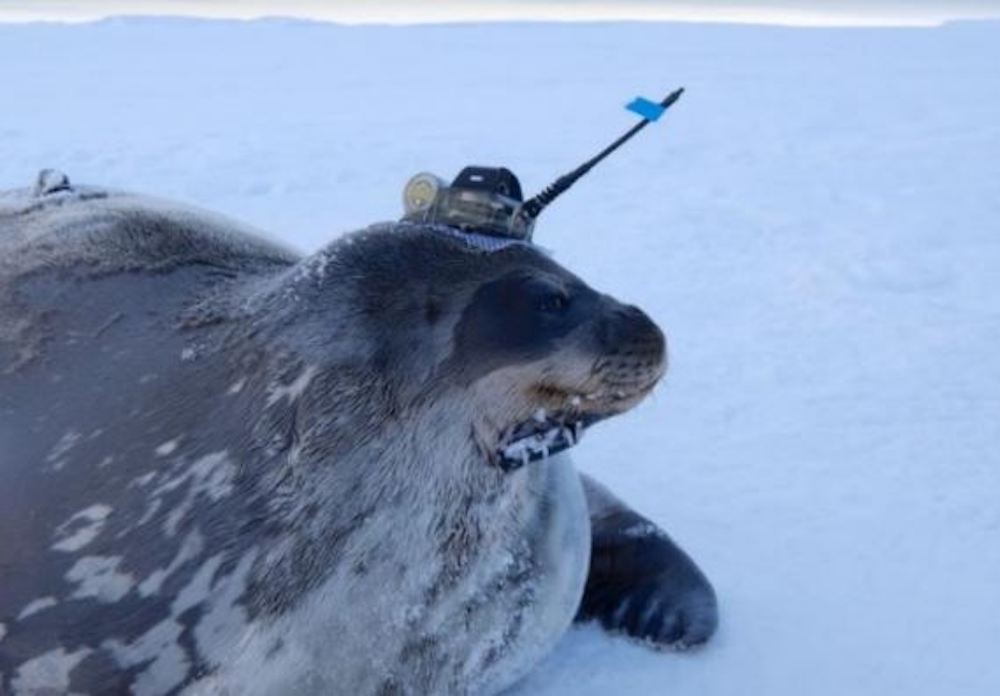Create a free profile to get unlimited access to exclusive videos, sweepstakes, and more!
Seals with frickin' sensors on their heads do research where humans can't
This is what happens when evil geniuses forget to be evil.

To be human is to be curious, but sometimes our grasp exceeds our reach, and we have to devise ways of getting to places, answering questions, and seeing things we weren’t ever intended to see. It’s that drive which results in the production of microscopes and rockets, of space probes hurtling beyond the boundaries of our solar system. Machines, however, aren’t always the best solution. In some cases, nature has already designed a thing better than we can design it ourselves. Sometimes we mount sensors to the foreheads of seals (sharks with frickin' laser beams weren't available, apparently).
On the surface of the Earth, there is no place more mysterious than Antarctica. It’s the only continent not inhabited by humans — aside from a small collection of scientists who temporarily call its frozen landscapes home — and it seems almost purpose built to keep us at arm’s reach.
Nobuo Kokubun from the Department of Polar Science at The Graduate University of Advanced Studies, and colleagues, hatched a seemingly wacky plan to gain greater access to the Antarctic environment by enlisting the help of native seal populations. The results of their work were published in Limnology and Oceanography.
Seasonal turnover of the world’s oceans impacts the ecosystems which build up in and around them. Understanding these cycles in the Antarctic is complicated by the presence of ice, which acts as a barrier for human observation. As waters encroach from other parts of the world their interactions drive changes in salinity, temperature, and food availability. Understanding how those interactions work is critical for a deeper understanding of the organisms and populations — seals included — which call Antarctica home.
"Oceanographic conditions under the sea ice is one of the main topics we were interested in, but it has rarely been investigated by ship-based surveys," Kokubun told SYFY WIRE. "Weddell seals can collect data efficiently. They have a large body size and are deep divers. Because they rest on the ice they're easier to spot and capture than other diving marine mammals like whales."
One of the major barriers to exploring the water cycle around Antarctica is the presence of free floating ice and ice fastened to the continent. Seals, however, have evolved precisely for navigating in this environment. Scientists have therefore developed a small suite of measurement instrumentation only a few inches in diameter which can be affixed to the heads of seals like techno party hats.
"The instruments were attached to the head fur using mesh and epoxy glue. Within a year, the instruments and these materials will be left with the old fur when the seals molt," Kokubun said.
These instruments weighed 580 grams (a little more than a pound) and collected data on the conductivity (salinity), temperature, and depth of water while seals go about their usual business. That data is then wirelessly transmitted back to researchers when seals surface from the depths.
The team was able to obtain more than 1200 data deliveries from seals which, when coupled with other preexisting data streams, showed that water of differing temperatures and salinities enter the environment in the fall and progressively alter the environment as the season goes on.
In addition to information about the state of the water column, scientists also gained data on the behavior of seals by measuring the frequency and depth of their diving behaviors. The transmitters recorded depth every four seconds in order to build a map of their location — and, by proxy, the seals’ locations — in the water column. These data points also provide insight into the overall environment by implying changes in food availability which influence diving patterns.
The seal-provided data helped fill in some of the gaps in our knowledge of the Antarctic environment. Scientists hope that continued measurements will help them build a model of how the ecosystem around Antarctica responds to changes in sea ice, such as those driven by climate change.



























